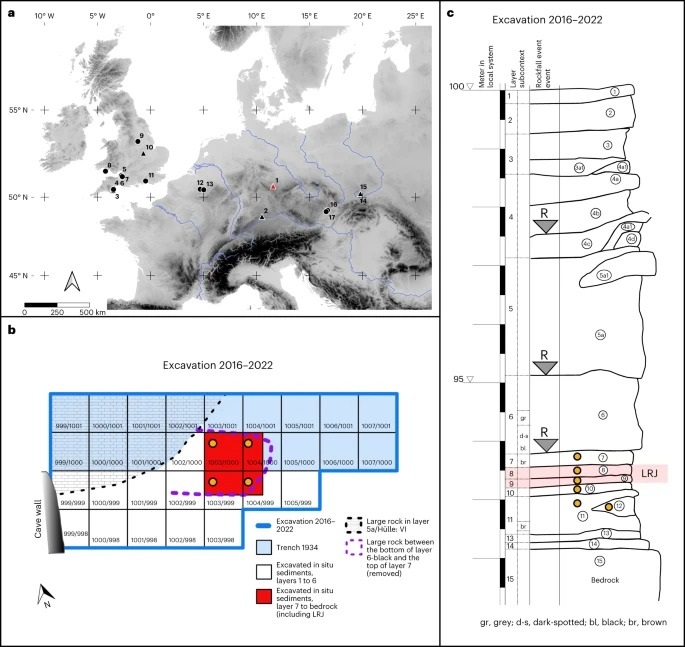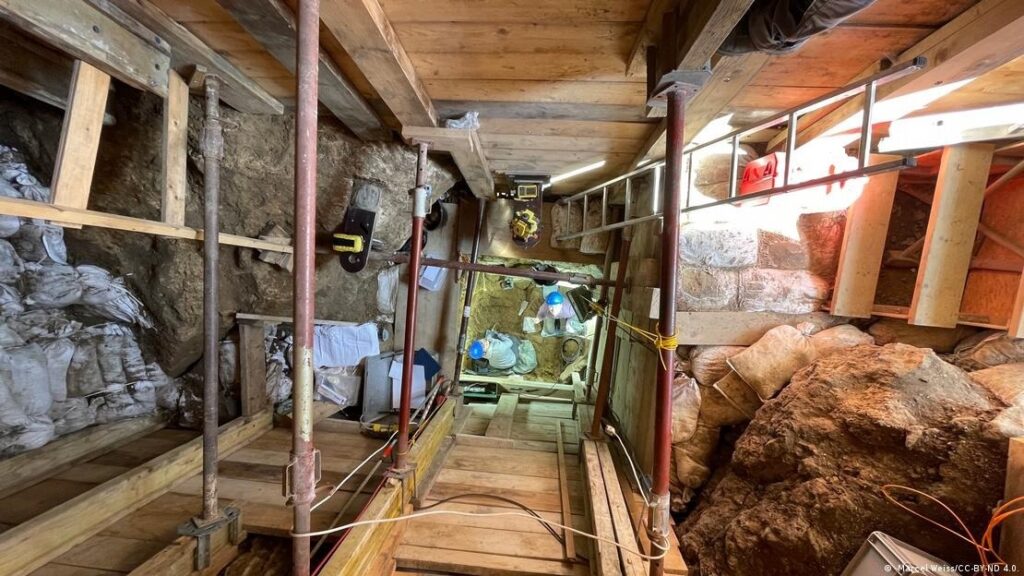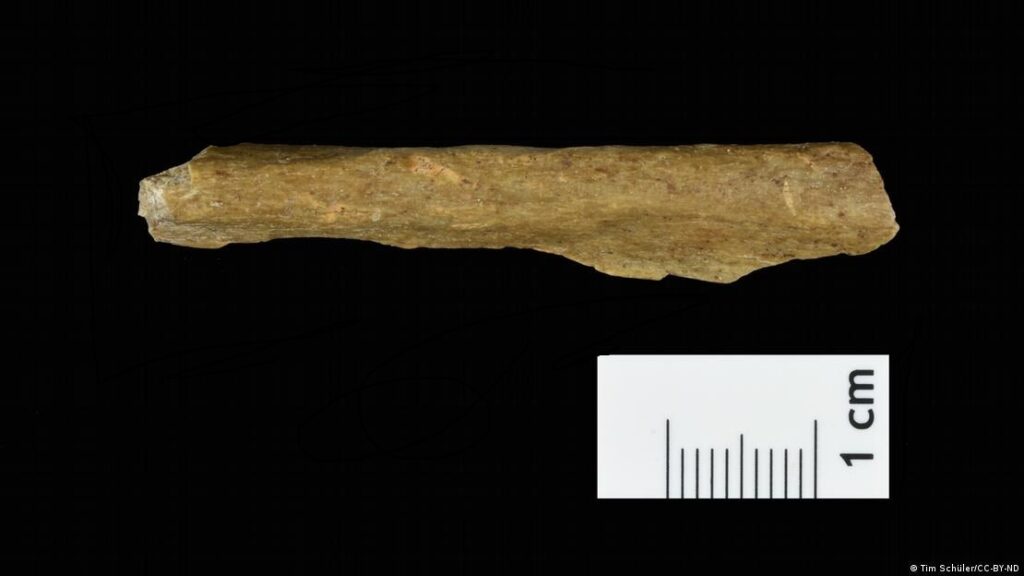
01 Feb The ecology, subsistance and diet of ~45,000-year-old Homo sapiens at Ilsenhohle in Ranis, Germany
Table of Contents
Introduction:
Nestled in Ranis, Germany, Ilsenhöhle cave has revealed fascinating details about the lives of our ancestors. Scientists exploring this cave have uncovered the remains of Homo sapiens who lived approximately 45,000 years ago. Let’s embark on a journey to understand how these ancient humans survived, what they ate, and how they coped with the environment around Ilsenhöhle.
Ecology of Ilsenhöhle:
Picture a very different Ranis, Germany, where Ilsenhöhle’s surroundings were dense with forests and failed with large animals. The climate was not like today, and it significantly influenced how these early humans lived. The environment played a vital role in shaping their daily lives and determining how they survived.
Survival Strategies:
Life for the Homo sapiens at Ilsenhöhle involved being smart about survival. They weren’t just gathering; they were skilled hunters too. The evidence we’ve found suggests they hunted big animals like mommonths and reindeer. The tools they used show us they had clever ways of hunting and processing their catch.
What They Ate:
The diet of these ancient humans was like a buffet, showcasing their ability to adapt to what was available. While they were good at hunting, they also knew how to gather plant foods. By studying their teeth and the leftovers on their tools, scientists discovered traces of various foods, including plants and maybe even fish. his flexibility in their diet shows us how resourceful our ancestors were.
Weathering the Changes.
Imagine dealing with unpredictable weather, which is what Homo sapiens at Ilsenhöhle faced. They adapted to changes and knew how to make the most of different resources. Their ability to cope with shifting climates is impressive and sheds light on their survival skills.
Insights into Culture:
Beyond just surviving, Ilsenhöhle provides us with insights into the culture of these ancient humans. The tools and artifacts discovered in the cave reveal their skills in making things, their ways of expressing meaning, and how they interacted with each other. It’s like a puzzle where each piece helps us understand the bigger picture of their lives.
Uncovering the Past:
In Ilsenhöhle, we have a time machine that takes us back 45,000 years. By exploring their environment, diet, and survival strestegies, we get a clearer picture of how Homo sapiens thrived in ancient times. Each artifact and fossil takes us a step closer to understanding the challenges and success of these early humans in the Ilsenhöhle region of Germany.
Rani's Tool Fossils: Linking Neanderthals and Homo Sapiens

The discovery of Rani’s tool Fossils is a big deal in archaeology. it helps us understand the connection between Neanderthals and Homo sapiens, our ancestors. These old artifacts show us that there was a lot of sharing and learning between these two groups, which changes what we thought about how humans evolved and moved around the world. This articles talks about why Rani’s Tool Fossils are so important and what they tell us about our past.
Discovering Rani’s Tool Fossils
In 2018, scientists digging in the Arabian desert found a bunch of old stone tools that are over 300,000 year old. They named them after Dr. Rani Amrani, who led the research. These tools, like handaxes and scrapers, are special because they have features from both Neanderthals and Homo sapiens. This suggests that these groups of early humans were sharing ideas and techniques.
Learning About How Tools Changed Over Time
Studying Rani’s Tool Fossils helps us see how early humans’ technology evolved. Some tools look a lot like ones made by Neanderthals in Europe and the Levant. Others look more like what Homo sapiens made, with more precise blades and fancy designs. This mix of styles suggests that different groups of early humans were talking to each other and learning from one another.
What it Means for How Humans Spread Out
Finding Neanderthal-like tools in the Arabian peninsula changes what we thought about how humans moved out of Africa. We used to think that Homo sapiens left Africa around 60,000 years ago and slowly took over Neanderthals’ territory. But finding Neanderthal-like tools in Arabia tells us that the story might be more complicated. Maybe there were lots of different groups of humans moving around and meeting each other.
Sharing Ideas and Adapting
The fact that Neanderthals and Homo sapiens made tools in similar ways in Arabia shows how adaptable early humans were. Instead of seeing them as separate groups, Rani’s Tool Fossils tell us that they were sharing ideas and changing their tools to fit different environments. This probably helped them survive and thrive in different places.
What Comes Next in Studying Early Humans
Researchers are excited to find more evidence of early humans in Arabia and other places outside Africa and Eurasia. By putting together the pieces of our past, scientists hope to learn more about why humans moved around, shared ideas, and made new technologies over thousands of years. Rani’s Tool Fossils are just the start of uncovering the many stories of human life.
Dating Homo Sapiens By Diet

Studying what people ate throughout history helps is learn a lot about how humans evolved. Researchers have looked at things like old artifacts, genes, and how our bodies are built to understand how diets humans had over the years and what they mean foe health and nutrition todays.
Eating in the Stone Age:
- From about 2.6 million to 10,000 years ago, humans lived in the Stone Age, which was our longest period of evolution.
- Early humans hunted animals and gathered fruits, vegetables, nuts, and seeds for food.
- This diet had lots of protein, some fat, and not too many carbs. It gave our ancestors plenty of nutrients to stay healthy and adapt to their surroundings.
Switching to Farming
- Around 10,000 years ago, people started farming, which changed how they ate.
- They began growing crops like wheat, barley, rice, and beans, and raising animals for food.
- This led to a diet with more carbs. While farming helped communities grow and stay put, it also brought new health problems like tooth decay and not getting enough of the right nutrients.
Different Diets Around the World
- People in different places and cultures have had very different diets.
- Those living near the sea ate a lot of fish, while those further inland focused more on animals and plants.
- Different traditions, cooking styles, and where people lived affected what they ate, leading to a wide variety of foods and recipes.
- Some groups adapted to their local diets over time, like being able to digest milk in farming communities.
Modern Food Changes:
- In the 1800s, the way food was made and eaten changed a lot with the industrial revolution.
- Processed foods, surgary snacks, and fast foods became popular, moving away from healthy whole foods.
- This shift has led to more people being overweight, having diabetes, and other health problems related to diet.
- Today, many diets have too many calories, processed carbs, and unhealthy fats, and enough fruits, veggies and fiber.
Looking at Diet and Health from an Evolutionary View
- Studying how our bodies evolved helps us understand why modern diets might not be good for us.
- The idea is that our bodies aren’t built for the way we eat now, which leads to health issues.
- Some experts suggest going back to eating more like our ancestors did—lean protein, fruits, veggies, nuts, and seeds—to stay healthier.
- Diets like Paleo, Mediterranean, and ones based on evolutionary nutrition focus on eating more like our ancestors did for better health.
Conclusion:
Ilsenhöhle is more than just a cave; it’s a treasure trove of information about our past. By studying the lives of Homo sapiens who lived there so long ago, we uncover the story of their survival, adaptability, and resourcefulness. Ilsenhöhle, Germany, serves as a bridge connecting us to the ancient world, reminding us of the incredible journey our ancestors undertook in the prehistroic landscape.


No Comments